Commercial Range Hood Install
opaone
4 years ago
Featured Answer
Sort by:Oldest
Comments (129)
kaseki
3 years agoM
3 years agoRelated Discussions
Hood FAQ
Comments (103)@billy_g, curious if you had any further success in your commercial hood investigations. Based on this thread, I've made some inquiries of my own, and thus far haven't found anyone doing commercial hood sales in my area (Northeast) willing to entertain a residential install, nor anyone willing to wade through the regulatory headaches of an install in a different state (can't really fault them on this one). I've reached out to Accurex, haven't heard back yet. Definitely a bummer though, I'm really digging the hood @opaone has, for all the reasons listed (and my hat's off to the quality research/analysis, from all contributors, that went into the FAQ!). If the commercial angle doesn't pan out, I may head down the path of a residential hood liner, and finding a local shop to do a sheet metal extension. Anyone have recommendations for liner vendors/models that would lend themselves to such a modification that might be "almost as good" as the hood @opaone installed? I see that Abbaka apparently does custom hoods, I think I'll contact them to see whether that offering extends to making essentially a big boxy liner....See MoreRange Hood Dilemma
Comments (19)As @kaseki said, you need to decide between aesthetic and function. For function your hood should at a minimum extend 3" beyond your cooktop on all open sides, should have some bit of containment volume (eg, open space within it to contain bursts of effluent), and proper CFM's of exhaust. Consumer hoods can be quite loud so placing the blower away from the hood and including a silencer in the duct between the hood and blower will help a lot w/ noise (which is both an aesthetic element and health element). More: https://www.gardenweb.com/discussions/5161173/hood-faq https://www.houzz.com/discussions/5745986/commercial-range-hood-install...See Morerange hood and ventilation questions- makeup air, ducting
Comments (7)Well, I can be long and rambly too, and suggest reviewing the many hood threads here to see that demonstrated. I can also suggest that if you, @Margaret Davis, do so, you will learn a lot more about both hood requirements and make-up air (MUA) requirements. I'll supplement the information on this site, first by noting my astonishment that whoever wrote that blurb for Proline seems to be missing the most fundamental concept -- no air leaves the kitchen that doesn't get replaced. No reports of imploded houses due to hood blowers pulling a vacuum have ever come to my notice. With respect to the requirement that outgoing air be matched by incoming air, the size of the kitchen is irrelevant. The blower size is irrelevant. How long you run your hood is irrelevant. There is always a balance such that the actual hood duct airflow matches what leaks into the house, or is allowed to flow into the house, or is deliberately blown into the house. Gag the MUA, and the house interior pressure drops until the hood blower volumetric flow rate matches what can leak in at that pressure drop. The controlling aspect is the 'fan curve' of the hood blower when MUA is passive (not blown) and the combination of fan curves when the MUA is active (blown). Example fan curve [click to enlarge] Broan 1200 CFM blower fan curve. The pressure that determines where one can operate on the fan curve is determined by pressure loss passing the hood baffles, the ducting, the exterior cap if not included in the fan curve, and the MUA pressure loss getting air back into the kitchen. With a large diameter passive MUA or imperfectly tuned active MUA, you are likely to see the actual hood air flow to be only 2/3 of the zero static pressure flow rate, that is, 2/3 of 1200 or 800 CFM. Modern codes require, as @Celedon noted, deliberate (active or passive) MUA when the hood rated blower size (not actual flow rate) exceeds 400 CFM. This is to ensure that any combustion appliances that are present, or may be present in the future, are not back-drafted by negative house pressure thereby introducing carbon monoxide into the house. Second, I won't go into hood requirements here as those should be easily found among the hood threads, and in any case you seem to have picked a hood or hood size. However, I will address the vertical duct question. Generally, the highest pressure losses will be the hood baffles and the MUA if passive, depending on duct size and filtering. So longer ducts will drop the overall flow, but perhaps not too much relative to these causes. This can be evaluated by plugging the duct parameters into on-line calculators that may be found by searching. Third, most ventilation noise is air turbulence noise, dominated by that at the blade tips of the blower. Duct turbulence will also contribute. Silencers reduce this, and may (as in the case for me) reduce the noise such that baffle turbulence (hiss) dominates. An advantage of running the duct into the attic would be that in the attic there may be room for a silencer to be inserted between the external blower and the hood. One can also angle the ducting there so that the external blower is at an advantageous point on the roof. No matter what tortuous path you choose, and the ducts you have sketched aren't really that long, be sure that the chase allows access to the ducting in case cleaning is needed (usually rare in residential cooking). In cold climates it is best to keep the duct warm over as much length as possible, so exterior ducting may want to be in a chase if very long. With a larger chase, a silencer can be put closer to the hood, which helps suppress duct noise. Fire protection in the chase may be an issue; discuss with your code enforcement officer. You should plan on using at least 10-inch ducting, but note that the Fantech 10-inch duct silencer is 14 inches in diameter by 3 ft long....See MoreCombining 2 smaller range hood inserts into one large hood.
Comments (17)At the moment, I would call them concerns pending further information. First, do you have any combustion appliances connected, air wise, to the kitchen? Combustion appliances include furnaces, hot water heaters, and dryers. If they all have their own make-up air sources, then they don't count. Fireplaces count unless roaring hot and quite large, in which case they need their own make-up air even without any kitchen ventilation effects. One of two windows cracked open a couple of inches will perhaps achieve adequate make-up air for a quite low CFM requirement in lieu of wall cracks and other dusty paths. Bathroom exhausts and dryer vents should have dampers that will not allow enough MUA for any purpose. Gas fireplaces are required to not have dampers, so only the doors limit back-drafting. That is also an undesirable path. 300 CFM, for example, is 5 cubit feet of air per second. This would require more than a couple of inches of window, even if unscreened, to avoid an undesirable pressure drop in the house when combustion appliances are present. It will certainly degrade the flow rates of the kitchen ventilation blowers, more so with VaH squirrel cage blowers used in Magic Lung systems. What are the claimed CFM of the VaH inserts you are using? (Zero static pressure values not Magic Lung claimed equivalent values) What is the area (or dimensions) of the air intake aperture at the bottom of the hood assembly containing the inserts? Is there some overhang of the overall hood relative to the entry apertures of the inserts?...See Moreopaone
3 years agolast modified: 3 years agoElmer J Fudd
3 years agolast modified: 3 years agoAngela Bickford
3 years agokaseki
3 years agoopaone
3 years agolast modified: 3 years agoElmer J Fudd
3 years agoopaone
3 years agolast modified: 3 years agoElmer J Fudd
3 years agoElmer J Fudd
3 years agolast modified: 3 years agoAngela Bickford
3 years agokaseki
3 years agoElmer J Fudd
3 years agoIsaac
3 years agoAngela Bickford
3 years agoM
3 years agoAngela Bickford
3 years agoElmer J Fudd
3 years agokaseki
3 years agocatinthehat
3 years agolast modified: 3 years agoAngela Bickford
3 years agocatinthehat
3 years agoopaone
3 years agolast modified: 3 years agoIsaac
3 years agokaseki
3 years agolast modified: 3 years agoGary
3 years agocatinthehat
3 years agocatinthehat
3 years agokaseki
3 years agoGary
3 years agoGary
3 years agokaseki
3 years agolast modified: 3 years agoGary
3 years agokaseki
3 years agoGary
3 years agokaseki
3 years agoopaone
3 years agokaseki
3 years agoopaone
3 years agolast modified: 3 years agosnwbdr94
2 years agoopaone
2 years agolast modified: 2 years agosnwbdr94
2 years agoopaone
2 years agoopaone
last yearSean Hollands
last yearlast modified: last yearM
last yearkaseki
last year
Related Stories

MATERIALSThe Most Popular Roofing Material is Affordable and Easy to Install
Asphalt shingles, the most widely used roof material in the U.S. are reliable and efficient, and may be right for you
Full Story
PETSHow to Install a Dog-Washing Station
Find out the options for pet showers and bathing tubs — plus whom to hire and what it might cost
Full Story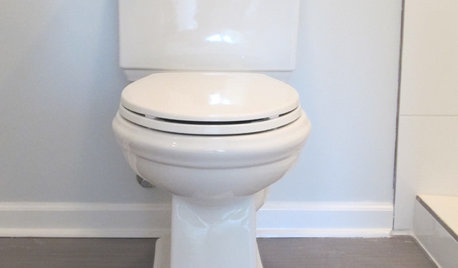
BATHROOM DESIGNHow to Install a Toilet in an Hour
Putting a new commode in a bathroom or powder room yourself saves plumber fees, and it's less scary than you might expect
Full Story
KITCHEN APPLIANCESWhat to Consider When Adding a Range Hood
Get to know the types, styles and why you may want to skip a hood altogether
Full Story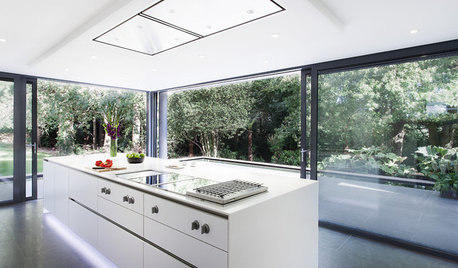
KITCHEN APPLIANCESDisappearing Range Hoods: A New Trend?
Concealed exhaust fans cut visual clutter in the kitchen
Full Story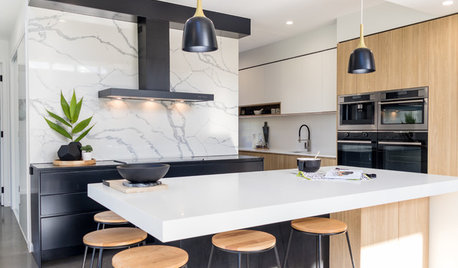
KITCHEN DESIGNHow to Get Your Range Hood Right
Get a handle on the technical specs, and then learn about fun design options for creating a beautiful kitchen feature
Full Story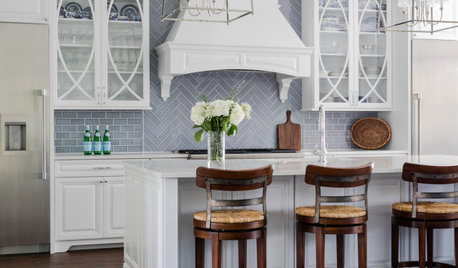
KITCHEN DESIGN10 Terrific New Ideas for Wrapped Range Hoods
See how designers use various materials and ornamentation to play up or play down a covered kitchen range hood
Full Story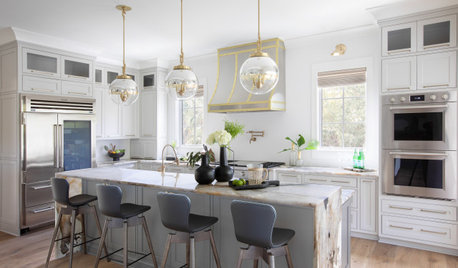
KITCHEN DESIGNDesigner Tips for Range Hoods, Appliances and Lighting
Learn how to get your microwave height just right, what kind of bar stool will be most comfortable and more
Full Story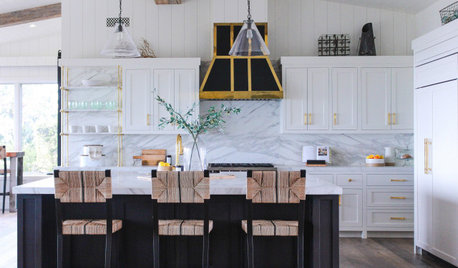
KITCHEN DESIGN15 Statement Range Hoods to Inspire Your Kitchen Remodel
See how 15 range hoods add personality and an intentionally designed look to their kitchens
Full Story
5 Stunning Modern Range Hoods
Today's kitchen range hoods can look like sleek sculptures. Here's what to look for when you go shopping for one
Full Story


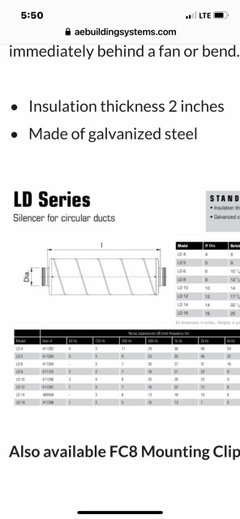
kaseki